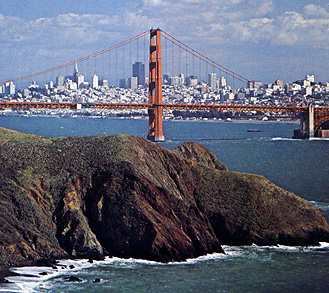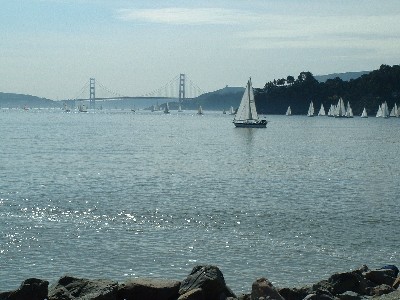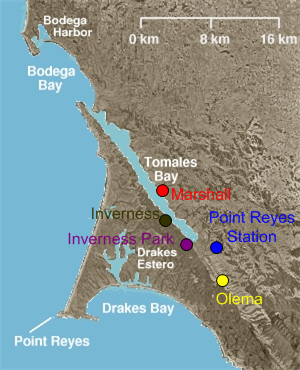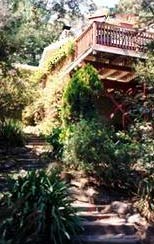June 21, 2007
Where is Home?
Since last summer’s beach trip I have traveled to a bunch of cities: Philadelphia, New York, Baltimore, Washington D.C., San Diego, Los Angeles, Chicago, St. Louis, Houston, Dallas, London, Oxford, Belfast, Derry, Edinburgh, St. Andrews, Frierichshaven Germany, Liechtenstein, Geneva, Zurich, Paris, Amsterdam, Rome and San Francisco.
Of all those cities, the last two are the ones that captured my heart the most. Rome, of course, has the best food in the world, the best coffee, arguably the best wine and bread. The mediterranean climate is lovely and the historical soil ranks as perhaps the richest in the world (though not the oldest). Visiting the Colosseum where Christians were fed to lions, and then visiting the Vatican where Christians dominate Rome and the Western world, is a stunning contrast. From the Vatican they likely planned the engraving of giant crosses on the side of the very complex that once persecuted and violated Christian martyrs.
San Francisco has a different and multilayered attachment to my heart. The bay area is probably the most beautiful piece of geography I have ever observed, which, this year, included the Alps and Eiffel Tower. The contrasts are striking when overlooking the Golden Gate Bridge: ocean waves crashing to your right, golden brown mountains behind you. Giant pine trees straight across the way, a major world city skyline across the blue bay to your slight left, Alcatraz Island just in front of you, beautiful sailboats and giant cruise liners and cargo ships traversing the bay, the Oakland Bay Bridge in the distance, and the quiet villages of Sausalito and Tiberon to your far left. Another layer of romance emerges when the fog rolls in from the ocean through the Golden Gate like a fluffy gray blanket being pulled by a tugboat.
Marin County, what you enter when crossing the giant orange bridge, has a personality and flavor unique to the world. Here you reach ground zero for organic concerns and the sustainability craze. Worldwide anti-war demonstrations probably germinate here. Signs in windows and bumper stickers on cars provide unsolicited maxims on world peace and politics (like complaints of big oil on a suburban).
While most cities hope to find one unique characteristic to promote tourism, the Bay Area has scores of them: Cable cars, Redwood forests, beaches, 17-mile drive, the Point Reyes Seashore, Napa Valley wine country, Chinatown, Haight-Ashbury, the beautiful bay itself . . . and the list goes on and on.
Some of you may wonder how such a culture might be attractive to me, given my heritage of strong morality and conservative politics. However, half of my DNA derives from Howard and Cecil Waite, my grandparents who purchased property an hour north of San Francisco in the 1960s after decades of traveling the globe helping war torn countries restore their infrastructures. Their seven acres on top of Vision Mountain in the village of Inverness on the Point Reyes Peninsula proved to be the nucleus of art and liberal activism that agreed with their sometimes naieve, sometimes sagacious, but always altruistic concerns. (One daughter went to Berkely right down the road, became one of the first beatniks, and helped trigger the 60s revolution. My mother attended UCLA and converted to Christianity in Bill Bright’s first Campus Crusade for Christ group.)
Those twists of fate made me a more complex person I suppose, but the Bay Area is in my blood. Also, I visited there every four five years of my life, and driving up the road to my grandfather’s several handmade dwellings at the top of the mountain–where the overwhelming scent of Bishop Pines compounds the nostalgia–always provides me with my own sense of what oasis and paradise might feel like. On this anomalous tract of land with Tomales Bay on one side and the ocean on the other, the temperature, like San Francisco, never exceeds 75 or dips below 40, and fluctuates quickly as the fog rolls in almost daily. A sweater and a burning woodstove are part of the daily lifestyle, perfect for a man who has been at an oceanside condo for the last five days now and has not yet stepped on the beach.
San Fransciso and Marin County does indeed connect with my internal psche and DNA in a poweful way. The town was named Inverness because the area so clearly resembles Scotland: pine forests, daily fogs, purple thistles growing on the sides of windy hills overlooking the stormy Pacific Ocean. My ancestor Stephen Arnold likely traveled to America from similar terrain in Scotland ten generations ago. He and his progeny continued moving West from their first settling in Southwestern Virginia, which also has an uncanny resemblance to the Scottish countryside I observed earlier this year. These frontiersmen were finally stopped by the Pacific Ocean. The friendly, laid back California lifestyle must somehow be related to these restless wanderers finally admitting the journey is over and its time to sit back and relax.
And what about the morality of the Bay Area? I disagree with the Gay agenda, certainly, but you actually see very little of it there unless you drive to certain areas of town where tourists rarely tread. And although the effects of evangelical Christianity are indeed small or fading, the Orthodox Church, now my faith tradition, has a uniquely strong presence in this eclectic city. Only a handful of saints have been canonized in North America, most from centuries ago. But the most recently canonized is named St. John the Wonderworker of Shanghai and San Francisco. Born in Ukraine, he became a bishop in Serbia, established a number of orphanages in China, then moved to San Francisco in his last years and built a major cathedral there before dying in 1965. Known for rarely sleeping, praying all night for his fellow Christians, and working miracles of healing, he was also reputed to scrap his heirachical garb at times and roam the streets of Haight and Ashbury in the early days of the Age of Aquarius, influencing and converting many young leaders in Berkely and San Francisco.
I visited the cathedral when I was there. St. John’s body sits in a coffin to the right of the altar. The top is glass, but John Maxomovich’s face is covered with a veil. His two hands, however, are completely visible, and, though darkened, have not decayed at all. During the service, many people will stop by the coffin, cross themselves, light a candle and say a prayer while observing the great saints’ remains. Weird, but very powerful.
So the Bay Area even has a spiritual connection to me. In fact, the small village of Inverness saw an Orthodox monastery established there 25 years ago, and several devout monks prayed and worshipped there, and interacted with the local crowd, who found them to be surprisingly godly, loving, and fantastic representatives of Christ and humanity, despite their “female bashing” traditions (I got this straight from the woman who owns the local New Age shop.) However, the monks left a year ago and moved to Redding California. In several months, they say more people have expressed interest in Christ than they saw in their quarter century tenure in West Marin County. Although very spiritual, the people in Marin are in fact quite hostile to Christianity. Political viewpoints don’t necessarily equate to spiritual health, but it is instructive to know that out of 50,000 registered voters in West Marin, only 76 are Republican.
While the Bay Area has a major spot in my heart–and may in fact feel more like home than any geographic area on the globe–I also feel that it could not remain my home for very long. Birth rates are below replacement; children are scant. The stark wilderness of the terrain reflects a lack of economic activity and a future unlikely to prosper. My grandfather’s cabin, sublime and award-winning 30 years ago, now slowly deteroriates at the foundation, with little to no hope of a restoration. I am once again reminded: this world, under its current cosmic regime, is not my ultimate home. But I do love it, just like the One slated to succeed the current ruler.









